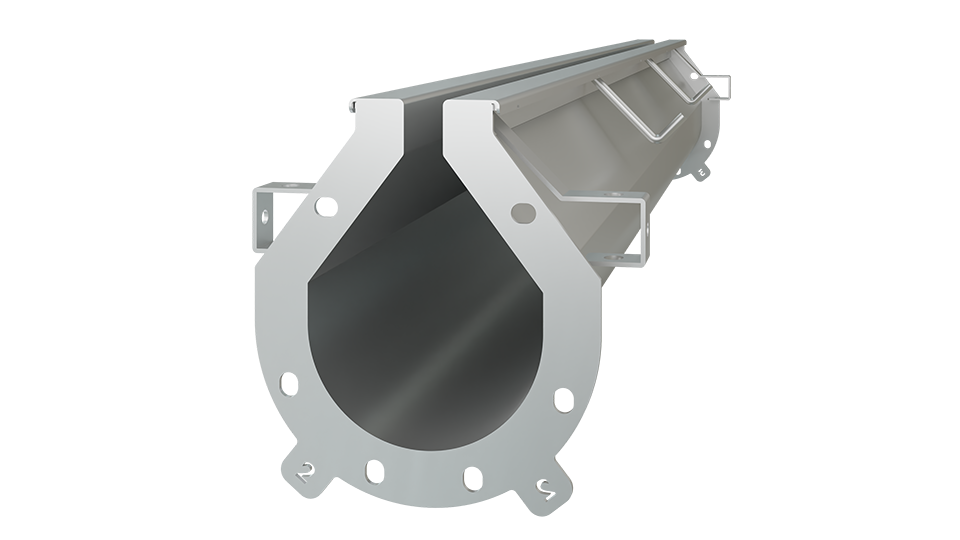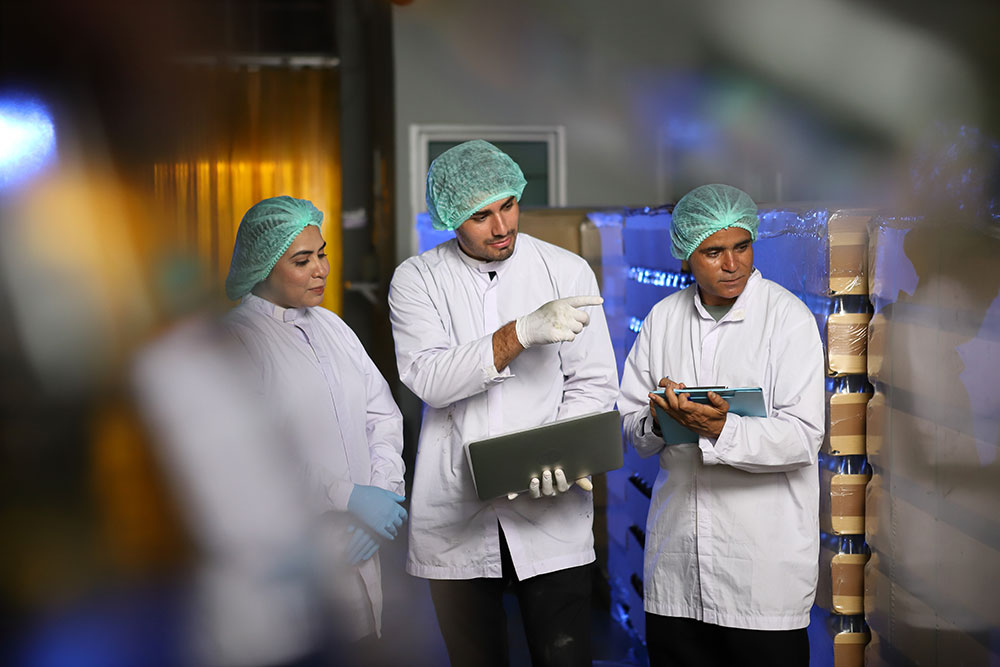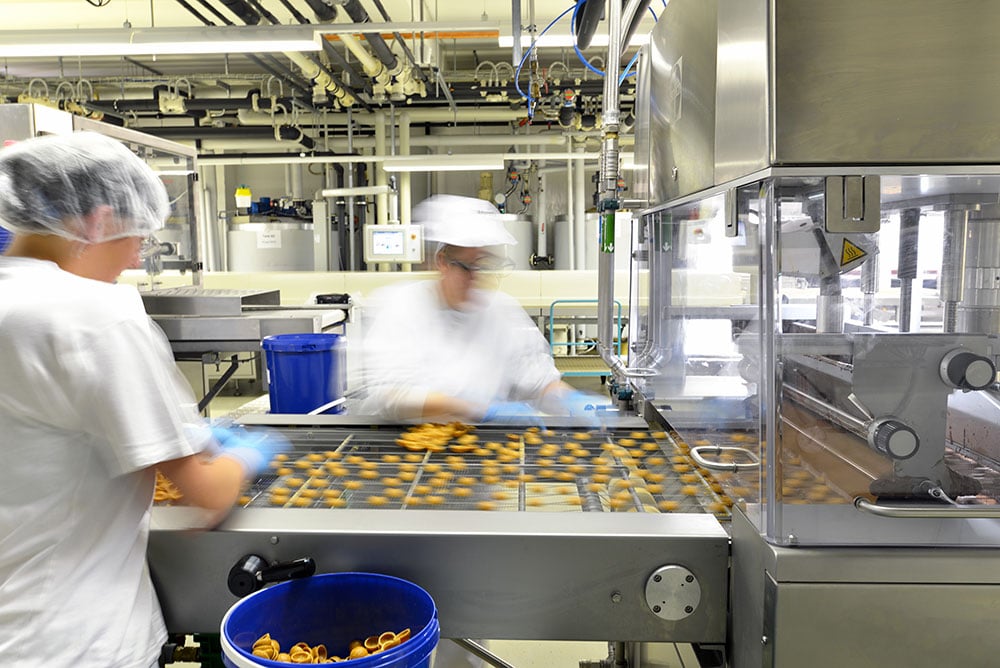Food safety is not an issue to take lightly.
Chipotle Mexican Grill Inc. learned the hard way in 2020 when they were faced with criminal charges for failing to follow food safety policies, which led to foodborne illness outbreaks that caused more than 1,100 people to become ill between 2015 and 2018. The company agreed to implement an improved safety program and paid a $25 million fine—the largest ever in a food safety case, as part of a Deferred Prosecution Agreement.
The case highlights not only the importance of food safety and following detailed food safety programs but also the importance of food safety audits.
What is a Food Safety Audit?
A food safety audit is a careful examination of a food-related business or facility to ensure they adhere to established food safety standards and regulations. Audits involve inspecting all aspects of the business or facility, including processes, procedures, documentation, facilities, and employee practices. If an auditor identifies concerns, they will recommend corrective actions and other areas for improvement.
Types of Audits
There are multiple types of audits a food company can have, and they are broken into two categories: internal and external audits.
Whereas internal audits are conducted by experienced food safety professionals or managers within the business in question, external audits are conducted by a second or third-party organization. External audits, however, are further broken into three categories based on the auditor's relationship with the business being audited.
Why is a Food Audit Important?
Audits are critical in ensuring the safety and quality of food products across the industry. They help promote accountability among food business owners to help protect customers from health threats like foodborne illnesses.
Food Safety Audits vs. Inspections
Both food safety audits and inspections serve similar purposes: they ensure food businesses abide by food safety plans and maintain an appropriate level of cleanliness and sanitation within their facility. While they serve similar purposes, there are notable distinctions between the two.
An inspection is a thorough, generally unannounced review of a business or facility focused on the physical state in that present moment. Food safety professionals from the FDA, USDA, or other regulatory bodies perform inspections, evaluate the establishment, and identify any positive and negative conditions. Failing inspections can result in license loss, fines, or criminal penalties.
A food safety audit is a thorough review of a food business or facility, conducted internally or externally. Audits are more formal and, as they are generally announced, involve more planning. They look at various aspects of the business, including past and present records and reports, to help identify where corrective actions may be necessary.
10 Steps to Prepare for a Food Safety Audit

Preparing for a food audit isn't difficult. Here are some tips to help make sure you are always ready:
1. Train Your Employees
One of the most critical aspects of running a food business is a well-trained staff. The more time you spend ensuring that all of your employees are properly trained, the better equipped they will be to handle the various processes as well as any situation that may arise within the facility. Training should also be continuous so processes and expectations stay fresh in employees' minds.
Training is also important during an audit, as employees, especially those performing key functions, will likely interact with the auditors. Proper training will help prepare them and instill the confidence to answer any potential questions the auditors may ask.
2. Have Sanitation Experts on Staff
Sanitation is one of the most critical and multifaceted aspects of food safety, which auditors will examine closely. Ensuring that you are up to code with these various aspects of sanitation can be difficult without the right help. Hiring dedicated sanitation experts can help you ensure your facility meets the requirements. An expert will also help to determine if there are any flaws with your existing sanitation processes and behaviors so improvements can be made.
3. Pay Attention to the Temperatures in Storage Areas
Another crucial aspect of food safety is maintaining the appropriate food storage temperatures. You must ensure that cold storage areas maintain an appropriate temperature to ensure foods remain safe and free from bacteria growth and contamination. Cold food deliveries should also be inspected to ensure they arrive at the right temperature and are stored immediately after acceptance.
4. Review Food Safety Standards
Reviewing the food safety standards is also a step in preparing for an audit. Whether it is an announced audit or a surprise, the food safety standards will outline everything they will look for. Reviewing them and ensuring your facility meets the standards will be another step closer to passing the audit successfully.
5. Conduct a Pre or Mock Audit
If you want to take your preparations a step further, consider performing a pre-audit. To do this, you only need a checklist with the most current and relevant food safety standards. Then, you can walk through your facility, and observe the work and processes from start to finish while trying to see things through the eyes of an auditor. Pay special attention to potential issues so you can take corrective measures before any audits.
6. Documentation is Key
Documentation is key to running any type of facility. It is also key during food safety auditing. Documentation creates a paper tail that allows you, the auditors, and other authorized personnel to see how the facility functions. Maintaining proper documentation also ensures that you will have proof if any issues arrive or a recall is necessary.
Proper documentation includes keeping logbooks up-to-date, clear and detailed product labels, date stamps, and more. These documents must be kept organized to access whenever necessary, like during an audit easily.
7. Staff meetings
Simply training your employees isn't enough. You should also implement staff meetings, especially in the period leading up to a food audit. Use these meetings to confirm that your employees understand their responsibilities and applicable standards. You can also take this time to train your employees on the proper way to handle auditor questions.
8. Give Your Team Confidence
Audits can be nerve-wracking for employees. Pre-audits, reviewing responsibilities, and practicing responses are all great ways to help build your employees' confidence. It's important to work with your team and build a positive food safety culture and work environment so that everyone feels secure in their knowledge and is ready for any question an auditor may ask.
9. Create Accountability
No one person within your facility should be doing more than another. Food safety tasks should be evenly distributed among employees, with your HACCP plan outlining each person's tasks.
By dividing tasks and responsibilities, employees are less likely to become overwhelmed, which can lead to mistakes and mishaps. It also supports the idea of a positive work environment and food safety culture.
10. Install a Sanitary Drainage System
Ensuring an appropriate, food-safe drainage system is another step in preparing for food safety auditing. FoodSafe Drains offers effective wastewater management solutions like their 10,000 Series Slot Drain and their FoodSafe Trench Drain, along with smaller hub and area drains. These systems are NSF-certified with food-grade T304 and T316 stainless steel, to ensure they are resistant to bacteria growth. The FoodSafe Trench Drain has a traditional build that requires a Grate cover, however, the FoodSafe Slot Drain has a slimmer build that eliminates that need and leaves a clear view into the channel without sacrificing water management efficiency.
The Ultimate Food Safety Audit Preparation
Maintaining a safe food facility is critical for many reasons. Whether internal or external, food audits are part of ensuring safety. While they may seem daunting at first, it isn't difficult to prepare for them—especially if you are already implementing a food safety plan. The tips listed above all play crucial roles in your preparation as well, because the more time you take beforehand, the more likely you will pass without issue.
Contact FoodSafe Drains today to learn more about their food-safe drainage systems and discover which is best for your business or facility!



